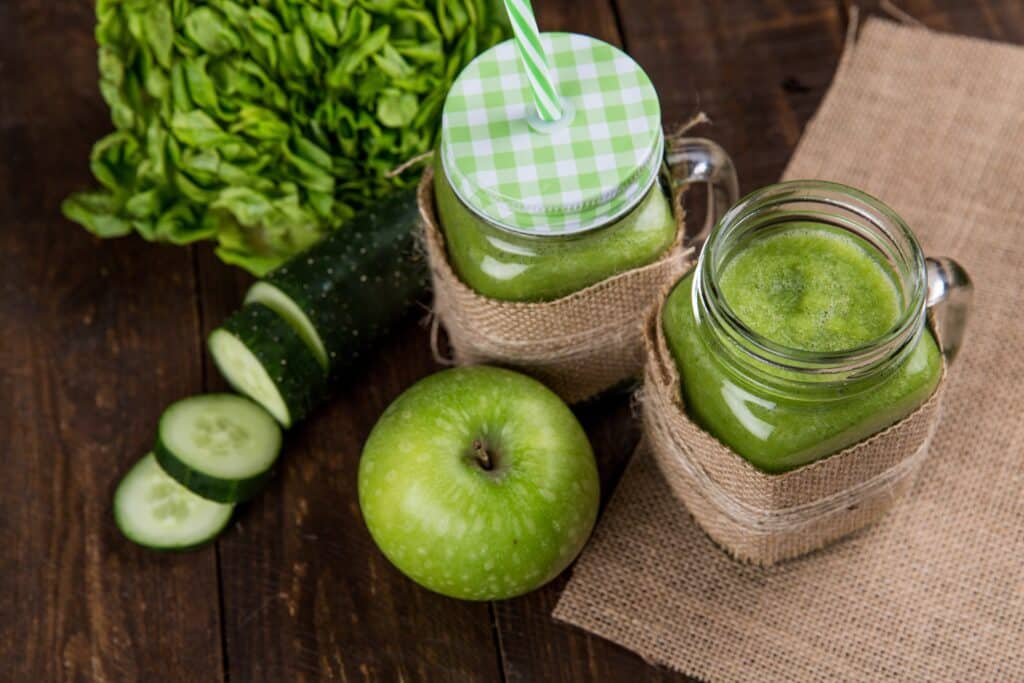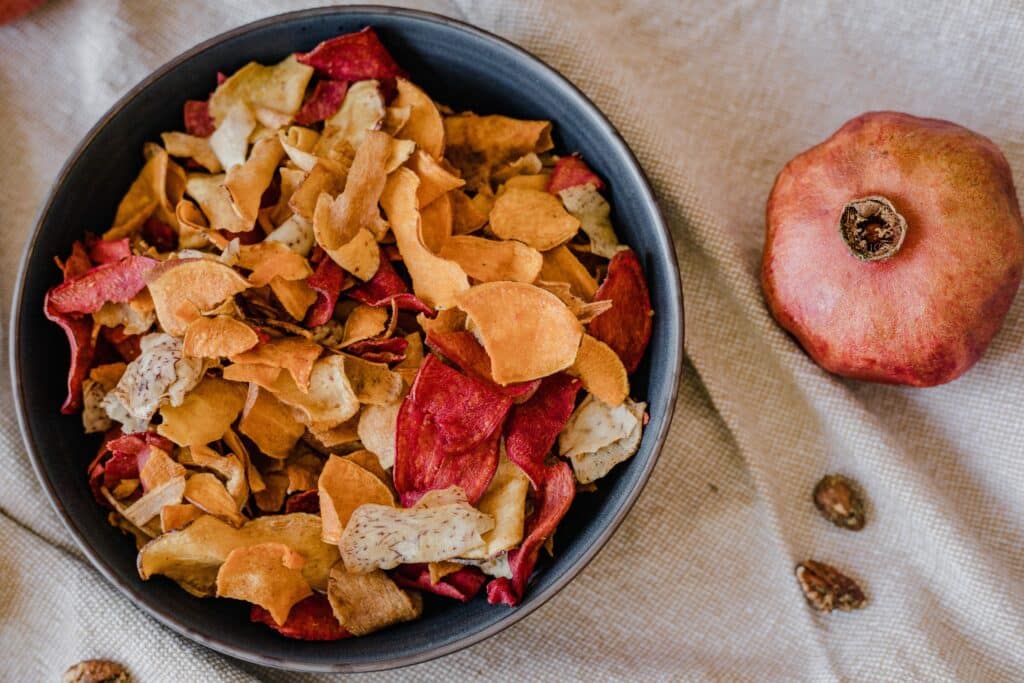Apples, often referred to as nature’s candy, have been a staple in our diets for centuries. With their crisp texture and a flavor spectrum ranging from tart to sweet, apples have found their way into culinary dishes, folklore, and daily snacks worldwide. But beyond the common apple varieties that grace our grocery store shelves, there’s a vast world of apple types, each with its unique taste, origin, and story. In this article, we’ll delve deep into the diverse world of apple varieties, exploring their significance in global cuisine and their unique characteristics.
The History and Evolution of Apples
The apple tree, scientifically known as Malus domestica, traces its roots back to Central Asia, specifically the regions of present-day Kazakhstan1. As ancient traders and explorers traveled, they took apple seeds with them, leading to the cultivation of apples in various parts of the world. Over time, through natural cross-pollination and intentional breeding, thousands of apple varieties emerged, each adapted to its local environment and cultural preferences.
Apple orchards became symbolic of prosperity and growth, with many ancient civilizations, including the Greeks and Romans, recognizing the fruit’s nutritional and medicinal value. As colonization and global exploration surged, apples found their way to almost every continent, with orchards sprouting in North America, Europe, and parts of Africa and Asia.
Apple Cultivation Details
Apples are not just a product of nature but also of careful cultivation. The journey of an apple from seed to fruit is a testament to the dedication of growers and the wonders of agricultural science.
The Journey from Seed to Fruit
Apple cultivation begins with the planting of seeds or, more commonly, the grafting of young trees. These trees require specific conditions to thrive, including the right balance of sunlight, water, and nutrients2. Over time, with proper care, they grow and produce blossoms, which, once pollinated, develop into the apples we recognize.
Importance of Climate and Soil
Apples have specific climate requirements, with many varieties needing a certain number of cold days to break dormancy and produce fruit. The soil, too, plays a crucial role, affecting the flavor, texture, and overall health of the apple. Rich, well-draining soil is ideal, ensuring the trees receive the necessary nutrients without being waterlogged.
The Global Impact of Apple Orchards
Apple orchards are more than just a source of delicious fruit; they play a significant role in economies, environments, and communities worldwide.
Economic and Environmental Significance
Apple cultivation is a major industry in many countries, providing employment to millions and contributing significantly to national economies. Orchards also play a vital role in the environment. Apple trees act as carbon sinks, absorbing carbon dioxide and releasing oxygen. They also provide habitats for various wildlife, promoting biodiversity.
The Role of Apple Orchards in Local Communities
For many local communities, apple orchards are at the heart of their culture and traditions. They provide livelihoods, are central to community events like apple-picking festivals, and contribute to local tourism. Orchards often become family legacies, passed down through generations, preserving traditions and histories.
Different Types of Apples and Their Uses
From the crispness of a freshly picked Gala to the tartness of a Granny Smith, each apple variety offers a unique flavor profile and culinary potential. Whether you’re baking a pie, juicing, or simply enjoying a raw apple, understanding the characteristics of each type can enhance your culinary experience. Let’s delve into some of the most popular apple varieties, exploring their origins, flavors, and best uses.
Gala
Originating from New Zealand in the 1930s, the Gala apple quickly became a favorite worldwide3. Recognized for its vibrant red-orange hue with yellow undertones, the Gala…
Granny Smith
The Granny Smith, one of the most recognizable apple varieties, boasts a vibrant green color and tart flavor. Maria Ann Smith discovered this variety in her backyard in Australia in the 1860s and lent her name to it4. The tartness of Granny Smith apples makes them perfect for baking, as they retain their flavor and don’t become overly sweet when cooked. Their firm texture also ensures they hold their shape in pies and tarts. Beyond baking, many enjoy the sharp taste of a raw Granny Smith as a refreshing snack.
Red Delicious
The Red Delicious apple, with its deep red skin and elongated shape, is one of the most iconic apple varieties in the United States. First discovered in Iowa in the late 1800s, this apple quickly gained popularity for its sweet taste and appealing appearance. While it’s often enjoyed fresh, its mild flavor also complements salads, pairing well with nuts and cheeses. However, due to its softer texture, it’s not typically the first choice for baking.
Honeycrisp
The Honeycrisp apple lives up to its name with a sweet flavor profile and a notably crisp texture. Developed at the University of Minnesota in the 1960s, this apple was introduced to the market in the 1990s and quickly became a favorite. Its juicy nature makes it a delightful snacking apple, and its balanced sweetness is perfect for juicing. The Honeycrisp’s firm flesh also holds up well in cooking, making it a versatile choice for various culinary applications.
Pink Lady
Also known as Cripps Pink, the Pink Lady apple boasts a beautiful pink-red hue with a hint of yellow. Originating in Australia in the 1970s, this apple variety is a cross between the Golden Delicious and Lady Williams apples. Its flavor is a delightful balance of sweet and tart, making it versatile for both cooking and fresh consumption. The Pink Lady’s firm texture and tangy taste make it a favorite for apple-based desserts and sauces.
Fuji
Developed in Japan in the late 1930s and brought to market in the 1960s, the Fuji apple is a cross between the Ralls Janet and Red Delicious apples. Known for its impressive sweetness and crispness, the Fuji apple has a long shelf life compared to other varieties. People love it for snacking because of its sweet profile, and many prefer its crunchy texture in salads. Although you can use it in baking, its high sugar content might make dishes taste sweeter than expected.
McIntosh
John McIntosh discovered the McIntosh apple, often just called the “Mac,” in Canada in the early 19th century. This apple, with its vibrant red and green skin and soft, juicy flesh, stands out for its tangy and slightly tart flavor. Its tender flesh breaks down easily during cooking, making it perfect for apple sauces and ciders. Though many people love eating it fresh, its softer texture can turn mushy when baked. So, bakers often mix it with firmer apples in pies and tarts to get the right consistency.
Cortland
Developed in New York in the early 20th century, the Cortland apple is a descendant of the McIntosh. It boasts a deep red skin with hints of green and a white, tender flesh that resists browning, making it a top choice for salads and fruit platters. Its flavor is a delightful balance of sweet and tart, and its texture, while softer than some, holds up reasonably well in baking. Cortlands are also favored for making apple butter and ciders due to their juicy nature.
Golden Delicious
Contrary to what its name might suggest, the Golden Delicious is not directly related to the Red Delicious. Originating from West Virginia in the early 20th century, this apple is recognized by its pale yellow, almost golden skin. It offers a sweet and mellow flavor, making it versatile for both eating fresh and cooking. Its flesh retains its shape well when baked, making it a popular choice for pies and tarts. Additionally, its mild sweetness complements savory dishes, often being used in apple-based stuffings and salads.
Braeburn
The Braeburn apple, with origins in New Zealand, presents a striking appearance with its red, orange, and yellow streaked skin. Its flavor profile is complex, offering a harmonious blend of sweetness and acidity. This crisp apple is versatile, being equally enjoyable when eaten fresh or when used in cooking. Its balanced flavor and firm texture make it a preferred choice for apple crisps and crumbles, where it can hold its own against spices and toppings.
Jonagold
A product of New York’s apple breeding program in the 1950s, the Jonagold apple is a cross between the Jonathan and Golden Delicious varieties. It boasts a beautiful red blush over a yellow-green background. With a juicy flesh and a flavor that’s a blend of tart and sweet, Jonagolds are often sought after for baking. Their large size and balanced flavor profile make them ideal for pies, and their juiciness is a boon for ciders and sauces.
Cameo
Discovered as a chance seedling in Washington during the 1980s, the Cameo apple has quickly risen in popularity. It’s characterized by its red-striped skin over a creamy, pale background. The flavor of the Cameo is notably crisp and sweet, with a slight hint of tartness. Its firm flesh makes it an excellent choice for a variety of culinary uses, from fresh snacking to baking. Additionally, Cameos have a longer shelf life compared to some other varieties, ensuring they stay fresh and flavorful for extended periods.
Empire
Bred in New York in the 1940s, the Empire apple is a cross between the Red Delicious and McIntosh varieties. It sports a deep red skin with occasional hints of green. The Empire’s flavor is a delightful combination of sweet and tart, making it a versatile apple for both fresh consumption and culinary creations. Its crisp texture holds up well in pies, and its balanced flavor profile makes it a favorite for apple sauces and ciders.
Cripps Pink
More commonly known as the Pink Lady, the Cripps Pink apple was developed in Australia in the 1970s. It’s easily recognizable by its vibrant pink skin and often has a yellow background. The flavor is both sweet and tart, making it a refreshing choice for snacking. Its firm texture and unique flavor profile also make it a popular choice for baking, especially in dishes where the apple’s flavor needs to shine through.
Ambrosia
The Ambrosia apple, with its origins traced back to British Columbia in the 1990s, is a naturally occurring cross, likely between the Golden Delicious and Jonagold apples. Its name, “Ambrosia,” means “food of the gods” in Greek, and many believe its honeyed flavor and crisp texture live up to this heavenly title. The apple’s skin is smooth, with a bright red blush over a yellow background. Best consumed fresh, the Ambrosia’s sweet flavor and lack of tartness make it a favorite among kids and adults alike.
Exploring Lesser-Known Varieties
While many are familiar with the popular apple varieties, there’s a world of lesser-known apples waiting to be discovered. These unique varieties, often grown in specific regions or passed down through generations, offer a range of flavors and uses that can surprise even the most seasoned apple enthusiast.
Antonovka, Wickson, and Other Unique Apples
People grow the Antonovka apple mostly in Russia and Eastern Europe because of its tartness, and they often use it in pies and sauces. In contrast, developers in California created the small Wickson apple, which has a sweet and spicy flavor that makes it a favorite for ciders. Countless other unique varieties exist, and each one has its own story, flavor profile, and culinary potential.
Their Origins and Special Uses
Many of these lesser-known apples have origins rooted in specific regions, cultivated for their adaptability to local climates or for specific uses. For instance, some might be bred for resistance to certain pests, while others are developed for their storage longevity or specific flavor profiles. Exploring these varieties offers a deeper understanding of the rich tapestry of apple cultivation and the endless possibilities they present in the culinary world.
The Art of Baking with Apples
Apples have long been a staple in baking, gracing our tables in the form of pies, tarts, crisps, and more. The key to a perfect apple dessert lies not just in the recipe but in choosing the right apple variety. The balance of sweetness and tartness, the apple’s ability to hold its shape when baked, and its juice content all play crucial roles in determining the outcome of a baked apple dish.

Choosing the Right Apple Varieties for Baking
Many people use various apples in baking, but some varieties consistently give great results. Bakers often pair tart Granny Smiths with sweeter apples like Honeycrisp or Braeburn in pies to balance the flavor. Meanwhile, the soft texture of McIntosh apples makes them a top choice for apple sauces or fillings when you want a smoother consistency.
Tips for a Flavorful Filling and Crispy Crust
When baking with apples, consider adding a splash of lemon juice to the filling to enhance the apple’s natural flavors. Spices like cinnamon, nutmeg, and allspice can also elevate the dish. For a crispy crust, ensure your dough is cold when rolling out, and avoid overfilling your pie or tart to prevent sogginess.
Juicing and Cider Making
Apples are not just for eating and baking; they’re also a primary ingredient in juices and ciders. The process of juicing extracts the liquid content from the apple, providing a refreshing drink packed with nutrients. Cider making, on the other hand, involves fermenting apple juice to produce a beverage with varying alcohol content.

Best Apple Varieties for Juicing and Cider Production
People favor apples such as Honeycrisp, Gala, and Golden Delicious for juicing because of their sweet profiles. For cider making, producers often blend different apple varieties to balance the flavor. By combining tart apples like the Granny Smith with sweeter varieties, they create a cider that tastes both refreshing and complex.
The Health Benefits of Fresh Apple Juice
Fresh apple juice is a powerhouse of vitamins and antioxidants. Rich in vitamin C, potassium, and dietary fiber, it’s a beverage that not only refreshes but also offers numerous health benefits. Regular consumption can aid digestion, boost the immune system, and even promote heart health.
Apple Chips: A Healthy Snack Alternative
In recent years, apple chips have emerged as a popular alternative to traditional snack foods. Made by thinly slicing apples and then baking or dehydrating them, apple chips offer the crunch of potato chips but with the nutritional benefits of fresh apples5. They’re a low-calorie snack, rich in dietary fiber and antioxidants.

The Rise in Popularity of Apple Chips
With a growing emphasis on healthy eating, many consumers are seeking out alternatives to fried and processed snacks. Apple chips, with their natural sweetness and satisfying crunch, have become a favorite choice for those looking for a guilt-free snacking option.
Nutritional Benefits and Comparison with Other Snacks
Apple chips retain many of the nutrients found in fresh apples. They’re a good source of dietary fiber, which aids digestion and promotes a feeling of fullness. Additionally, they contain antioxidants that combat free radicals in the body. When compared to traditional snacks like potato chips, apple chips are lower in calories and free from added sugars and preservatives.
Apples in Global Cuisine
Apples, with their universal appeal, have found their way into the culinary traditions of many cultures around the world. From savory dishes to sweet desserts, apples lend their unique flavor and texture to a myriad of recipes, showcasing their versatility in global cuisine.
How Different Cultures Utilize Apple Varieties
In France, apples are a key ingredient in the classic Tarte Tatin, a caramelized upside-down apple tart. The British Isles celebrate apples in their traditional apple crumble, often served with custard or ice cream. People consider apple pie a quintessential dessert in the United States, especially for Thanksgiving. In contrast, many Asian cuisines incorporate apples into savory dishes, pairing them with meats or adding them to salads to provide a sweet contrast to spicy or tangy flavors.
Innovative Apple Recipes from Around the World
Chefs around the world are constantly reimagining how to use apples in their dishes. In Korea, you might find apples in a refreshing summer salad paired with cucumbers and a spicy chili dressing. Indian cuisine might feature apples in chutneys, providing a sweet and tangy side to main dishes. People in the Middle East add apples to slow-cooked stews, and in Central Europe, they might grate them into potato pancakes, giving a sweet twist to a savory classic.
Concluding Thoughts
From their ancient origins to their present-day significance, apples have remained a constant in the ever-changing tapestry of global culture and cuisine. As we continue to discover new varieties and find innovative ways to incorporate them into our diets, one thing remains clear: the timeless appeal of apples is here to stay.
The Continuous Discovery of New Apple Varieties
Even today, apple enthusiasts and agriculturalists are on the quest for the next great apple variety. Through careful breeding and cultivation, new apples with unique flavors, textures, and resistances to pests or diseases are being developed, ensuring that the world of apples remains dynamic and exciting.
The Timeless Appeal of Apples in Global Cuisine
Apples have been cherished for millennia, not just for their flavor but for their versatility in cooking. From the simplest fresh snack to the most intricate dessert, apples have proven their worth in kitchens worldwide. Their universal appeal, combined with their rich history and cultural significance, ensures that apples will continue to be celebrated for generations to come.
Frequently Asked Questions
What are the most popular apple varieties?
Some of the most popular apple varieties include Gala, Granny Smith, Red Delicious, Honeycrisp, and Fuji.
Which apple varieties are best for baking?
Granny Smith, Cortland, and Braeburn are among the best apples for baking due to their tartness and firm texture.
How do different apple varieties differ in taste?
Apple varieties can range from sweet (like Gala and Fuji) to tart (like Granny Smith) and even balanced sweet-tart flavors (like Pink Lady).
What are the health benefits of different apple varieties?
Apples are a rich source of dietary fiber, vitamin C, and various antioxidants. Different varieties may have varying levels of these nutrients, but all offer health benefits.
Which apple varieties are best for juicing?
Gala, Honeycrisp, and Golden Delicious are among the top choices for juicing due to their sweet and juicy nature.

